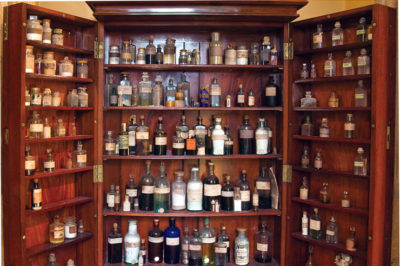From New Dawn Special Issue Vol 11 No 5 (Oct 2017)
Natural substances that were once abundantly used for health and well-being are making a comeback today. All are easily and cheaply obtained from the local supermarket, chemist or hardware store.
Castor Oil
Castor oil is derived from the castor bean plant, aka Palma Christie. It has been used since ancient Egyptian times and in many Ayurvedic medications. Castor oil supports the immune system as it contains a very dense source of ricinoleic acid (an unsaturated fatty acid), increases the count of T-11 cells (white blood cells) and boosts lymphocyte production. It helps detox by supporting the lymphatic system, increases blood circulation, and supports the digestive system while reducing viruses, bacteria, yeasts and moulds.
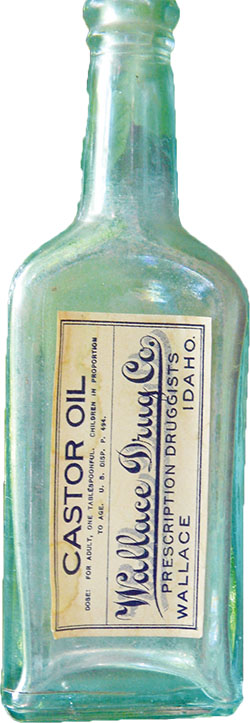
Applied topically, castor oil can help ease pain while promoting the healing of internal organs. Edgar Cayce advocated the use of Castor Oil Packs – applying castor oil to painful areas with a heat source (specific instructions can be found at www.edgarcayce.org). Rub into the stomach for digestive disorders, on the kidneys for infection and pain, on the neck for lymphatic drainage or over the adrenal glands to fight fatigue. Its anti-inflammatory properties help ease joint pain by simply rubbing it into the joint and applying a hot water bottle.
Castor oil kills toenail fungus within days and has been used with a pinch of baking soda to remove cysts, warts, corns and moles. Absorbed easily through the skin, it has also been known to dissolve internal cysts in the ovaries. It helps any skin inflammation, including acne, while also used as a beauty product to nourish the skin and hair (reduces dandruff and scalp infections).
Taken internally, castor oil is a mild laxative and helps regulate hormone levels, such as estrogen. It has been used to lessen PMS and menopause symptoms while reducing fatigue, mood swings and depression. It should not be taken during pregnancy, as it can induce labour.
Cod Liver Oil
This nutrient-dense source of vitamin A, vitamin D and omega-3 fatty acids has been a favourite of grandmas all over the world for general well-being. Oiling the ‘creaks’ from the inside, cod liver oil is an excellent anti-inflammatory. It plays an important role in maintaining cardiovascular, immune, reproductive, hormonal and neurological health.
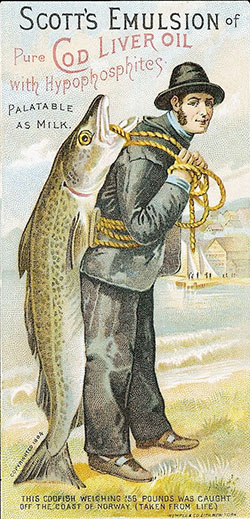
Cod liver oil has been reported to lower cholesterol and high blood pressure, treat depression and anxiety while reducing risks of heart disease, arthritis, autoimmune disease, kidney disease and eye disorders. Omega-3 fatty acids keep the brain sharp and are particularly helpful for children struggling at school. Cod liver oil has one of the richest sources of vitamin D and works with calcium to provide good bone health, prevent cancer, and vital for proper cognitive health.
In inflammatory conditions such as arthritis, cod liver oil reduces swelling, stiffness and pain. Used during pregnancy and lactation, cod liver oil has helped produce healthier babies and been linked to higher brain development. As it nourishes the brain, cod liver oil has also been found helpful in preventing Alzheimer’s disease.
Epsom Salt
Epsom salt is a natural mineral compound of magnesium sulphate (MgSO4 – magnesium, sulphur and oxygen), three essential elements required for a healthy body. Magnesium and sulphur are readily absorbed through the skin, therefore taking an Epsom salt bath is the most beneficial way to ease tired muscles and release stress. Add one to two cupfuls of Epsom salt to your bath and soak for 20 minutes. Stress drains the body of magnesium and increases adrenaline levels. Absorbing the magnesium from Epsom salt lowers the effects of adrenaline, helps lower blood pressure, creates a relaxed feeling, improves sleep and concentration, reduces inflammation while helping muscles and nerves to function properly. Sulphates improve the absorption of nutrients, flush toxins from the body and help ease migraine headaches. A foot bath can also be beneficial – add ½ cup to a bowl of warm water.
As magnesium and sulphur are essential to hundreds of bodily functions, Epsom salt can enhance your health in hundreds of ways: helps prevent the hardening of arteries and blood clots, makes insulin more efficient, enhances electrical impulses of the nerves, reduces muscles cramping and restless legs, relieves the symptoms of arthritis and gout. Taken internally, Epsom salt cleanses the colon, thus having a laxative effect. A few sprinkles can be added to your water bottle to sip throughout the day.
Caution: As Epsom salt detoxifies the body, you may feel drained of energy, dizzy or experience a healing crisis to begin with.
Activated Charcoal
Activated charcoal is the resulting medical-grade carbon made from slow burning wood. Charcoal adsorbs (rather than absorbs) toxins from the body by attracting them electrostatically. ¼ – 1 teaspoon in a glass of water is sufficient for most health problems, however, a tablespoon portion can be used as a first aid remedy for poisoning.
Activated charcoal has been used internally to treat diarrhoea, IBS, stomach flu, bloating and gas, infections, body odour and for detoxing. Take two hours away from medications, as it may adsorb them. Also, drink lots of water to avoid constipation.
Charcoal can be made into a poultice to draw out toxins from the skin. A poultice is useful for insect bites, food poisoning, pain, swelling, ovarian cysts, canker sores, tooth abscess and haemorrhoids. Gauze pouches or patches can be made to apply charcoal to the skin to draw out impurities, e.g. for leg ulcers, tea bags and sanitary pads have been used for this purpose.
Baking Soda
Baking soda, also known as sodium bicarbonate, is useful for alkalising the body. Too much acidity causes many illnesses that baking soda can help relieve. Mix ½ – 1 teaspoon of soda in a glass of water until fully dissolved; drink first thing in the morning. This can help with stomach issues, such as pain, gas, bloating and heartburn. Balancing the pH levels of the body aids kidney function which have difficulty processing acids. Take a ¼ teaspoon of soda in water half an hour after meals to avoid heartburn, indigestion and acid reflux (or take when the attack occurs).

Sodium bicarbonate helps dissolve uric acid, the main cause of gout, and lactic acid that builds up with strenuous exercise to cause muscle pain. Baking soda is easily absorbed through the skin, therefore a foot bath for gout or full bath (add 1 cup) for aching muscles is beneficial. Baths can also help relieve itchy skin, shingles, insect bites and dermatitis, or mix a little soda with water to make a paste to apply directly onto the itchy area.
If you are already eating an alkaline diet of fresh vegetables or drinking alkaline water, do not use bicarb as too much can alter the hydrochloric acid needed in the stomach for proper digestion; it’s about balancing the pH levels.
Boron
Borax is a naturally mined compound containing sodium, boron, oxygen and hydrogen. Boron is a trace mineral which has vital functions in the body. It has an alkalising effect and has been used to treat fungus, candida, ringworm, tinea, hormone imbalances, autoimmune disease, calcium deposits, bone spurs, osteoporosis and insomnia. Boron is an excellent healer of arthritis; there have been correlations made between low boron levels in the soil to high rates of arthritis, and vice versa, from all around the world. Boron is needed in the body for the proper absorption and functioning of calcium, magnesium and phosphorous – essential for healthy bones. It also helps memory and cognitive function.
To make a borax tonic, add a heaping teaspoon to a litre of water as your base solution. Then take one teaspoon of this solution once or twice a day with food (provides about 30mg of borax / 3mg of boron per dose).1 Applied topically in a bath or poultice, borax can be used for skin irritations, fungal infections, nits and scalp problems; also on dogs to treat mange.
In Australia, Borax is considered toxic (about the same as table salt). Do not use in high doses or with children. Borax can be found in the laundry aisle of the supermarket or hardware store. For more information go to www.health-science-spirit.com/borax.htm
Lectric Soda
Lectric Soda, soda crystals or sodium carbonate is a naturally mined limestone also found in the laundry aisle (same as Borax). It has been used for over 50 years to draw fluids away from the body, thus reducing swelling. In recent years soda crystals have made their way into the sports medicine section of the chemist to relieve aching muscles, to rejuvenate after strenuous exercise, accelerate sports recovery, as well as drawing fluid away from swollen joints. The soda crystals can be added to a bath or foot bath; sodium can help relieve sciatica.* To draw fluid away, an old sock or nappy was filled with crystals, tied around the swollen joint and left overnight. In the morning the sock will be full of fluid. Nowadays, special wrappings are available, with pockets for the crystals (in the sports medicine section of chemists).
Blackstrap Molasses
Molasses is a by-product of the processing of sugar cane. Blackstrap molasses, from the third boiling of the sugar cane, is the strongest type of molasses because it is so concentrated with nutrients. It contains calcium, iron, magnesium, potassium, phosphorous, zinc, manganese, selenium, pantothenic acid, thiamine (vitamin B1), Vitamin B2, niacin (B3), vitamin B6, amino acids and linoleic acid. As a nutrient dense food, it has been used for many ailments caused by nutrient deficiencies, such as anaemia, heavy menstrual bleeding, fibroids, acne, arthritis, grey hair, hair loss, constipation, low energy, hot flushes, headaches, anxiety, restless leg syndrome, nose bleeds, weight loss and sugar cravings. It has also been mixed with baking soda to help treat cancers.
Blackstrap molasses can be taken by the spoonful, but be warned it is very strong tasting. Use it in cooking or add a tablespoon to warm water for a drink. As the vitamins and minerals are naturally occurring, the body readily absorbs them better than capsules or tablet supplements.
Apple Cider Vinegar
Apple cider vinegar (ACV) is made from raw apples, with the purest form still containing the ‘mother’ (stringy parts of apple). It has been hailed a miracle cure as it has hundreds of health benefits. Our modern day diet leads to over acidity in the body that can be the root cause of many ailments. ACV helps alkalise the body, improves digestion, balances mineral intake, binds with enzymes to metabolise fats and carbohydrates, is antifungal and antibacterial, stimulates the immune system and contains the prebiotic Pectin, enzymes and minerals, e.g. potassium and magnesium. Here are just some of the conditions ACV can benefit: heartburn, reflux, diarrhoea, shingles, warts, eczema, nail fungus, constipation, high blood pressure, dandruff, sinus infection, gout, high cholesterol, diabetes, hives, insect bites, PMS, arthritis, low energy, colds, fever, cramps and sprains. Taken internally, ACV reduces inflammation and has been known to relieve the pain of plantar fasciitis in the foot within days.
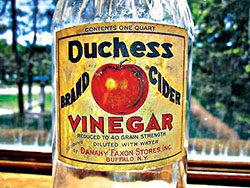
When using topically, dilute ACV by 50% with water. For general well-being, take a 15-20ml shot in the morning; two tablespoons a day is a rough guide. For weight loss or digestive issues, take an ACV shot half an hour before meals. ACV can be added to your water bottle to sip throughout the day or made into a hot drink with lemon and honey. Nanna’s recipe for arthritis: 2 teaspoons of ACV, 2 teaspoons of honey in a glass of water, at each meal sipped.
Kombucha
Kombucha tea is a fermented drink containing living bacteria, organic acids, enzymes, vitamins, minerals and probiotics. It is primarily used for good gut health – killing bad yeasts and pathogenic bacteria in the digestive tract while increasing enzyme and nutrient content in foods. Kombucha tea is made by combining tea, sugar and the starter culture, known as ‘Scoby’ (symbiotic colony of bacteria and yeast), then allowed to ferment. Scoby is also referred to as a culture, fungi or mushroom, but these terms are not strictly accurate.
Reports of Kombucha tea usage date back thousands of years; it was known as the ‘elixir of long life’ during the Tsin Dynasty of the Chinese Empire in 221 BCE; used by a Korean medicine man named Kombu to treat the Japanese Emperor Inkyo’s disorders in 14 CE; carried by Japanese warriors in mediaeval times for greater energy; used in Russian folk medicine for maintaining health. Kombucha tea made a revival as a health tonic in the 1960s, easily brewed at home. Traditionally, the ‘mushroom’ was gifted to you from a fellow brewer; the initial mushroom ‘mother’ produces ‘sons’ during the brewing process. Kits containing Scoby can be found at health food stores or online. Kombucha tea can now be found ready-made on supermarket shelves.
Drinking Kombucha tea is said to bring balance to the body, which in turn aids in the recovery of many different illnesses. The most commonly observed effects include:
- Balancing the metabolism
- Cleansing the blood and regulating the acid/alkaline levels in the body
- Improving liver, gall bladder and digestive function
- Detoxifying the body and enhancing the immune system
- Raising energy levels.
For general well-being, three wine glasses (150ml) of tea is recommended daily; one first thing in the morning on an empty stomach, then one each with lunch and dinner.
Kombucha can be applied topically to soothe and heal skin conditions such as eczema, and taken internally it fortifies the body aiding in the recovery from such conditions. Compresses made with the tea have been used successfully to reduce the pain of rheumatoid arthritis in the joints. The tea can help remove brown liver spots from the hands; apply twice a day with cotton wool. A Kombucha bath can be used to energise the whole body, treat skin conditions and improve general well-being; add half a litre to a warm bath.
The Scoby can be used to heal wounds such as leg ulcers, abscesses and boils. Cut a piece of the Scoby from the fermenting jar and bandage it onto the wound; cover surrounding skin firstly with a barrier cream, as the Scoby may irritate normal skin. Or make your own cream by crushing some Scoby with an electric blender, then combine with unperfumed hand cream (ratio: 1 part Scoby to 2 parts hand cream).
Kombucha tea can be gargled to help heal throat and mouth infections. Gargling ten times a day has helped tonsillitis while swishing around the mouth for 15 minutes has helped heal intestinal diseases and nasal cavity inflammations. Make a steam inhalation by adding 1 cup of tea to a bowl of steaming water. Cover your head and bowl with a towel to breathe in the steam; use for colds and sinusitis relief. A nasal spray can be made by mixing equal parts of water and tea placed in a small spray bottle.
Studies have been done with high-performance athletes in Russia, drinking a ¼ litre of tea, three times a day. Performance was enhanced while muscle aches and recovery times were reduced due to the tea’s ability to lessen the salt component of lactic acid (the cause of muscle soreness as a result of strenuous exercise).
KOMBUCHA RECIPE
Ingredients & materials:
1 Kombucha Scoby – starter culture
2 litre of boiling water
2-4 black tea bags (or loose leaf)
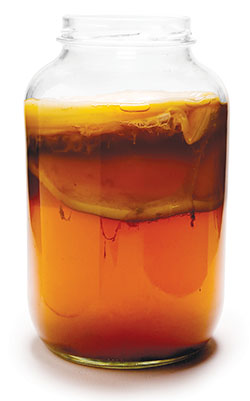
¾ cup of white sugar
30ml cider or white vinegar (1st batch only). For subsequent batches, use 200ml ‘mother tea’ kept from 1st batch.
1 large glass jar or bowl
1 cotton muslin cloth
1 tea towel
1 rubber band / elastic
Method
Bring water to the boil
Add tea bags and sugar, brew for 10-15 mins
Remove tea bags and pour into glass jar
Cool to room temperature
Add vinegar or ‘mother tea’
Add Scoby (do not add culture to hot liquid as this will kill it)
Scoby can lay anywhere within the mixture
Cover with muslin and secure with elastic, cover with tea towel to keep out light
Store in a dark, ventilated space, e.g. cupboard
Ferment for 5-10 days (depends on temperature)
Taste should be neither sweet or sour – if sweet, leave for a few more days, if sour it is still usable, just don’t leave as long next time
When ready, remove ‘mother’ and separate any ‘sons’ that have formed onto a plate
Strain beverage into bottles, refrigerate
Keep 200ml for next brew
Start your next brew using the ‘mother’ (up to 8 times) or ‘son’ if thick and healthy
If not making another brew immediately, store Scoby in an airtight container covered with Kombucha brew, in the fridge. Ensure there is air space between the culture and the lid. Can be stored for up to 6 months.
Other types of tea can be used, e.g. green tea or herbals. Experiment by adding fruits or herbs to the final brew.
Resources
www.webmd.com
draxe.com
www.earthclinic.com
www.health-science-spirit.com
Kombucha Tea For Your Health and Healing by Alick & Mari Bartholomew, Gateway 2000
Kombucha – Miracle Fungus by Harald Tietze, Gateway 1996
Nourishing Fats by Sally Fallon Morell, Hachette Book Group 2017
© New Dawn Magazine and the respective author.
For our reproduction notice, click here.

